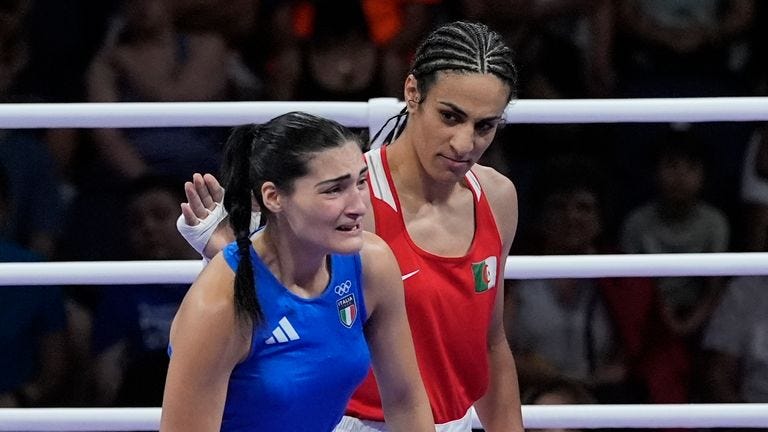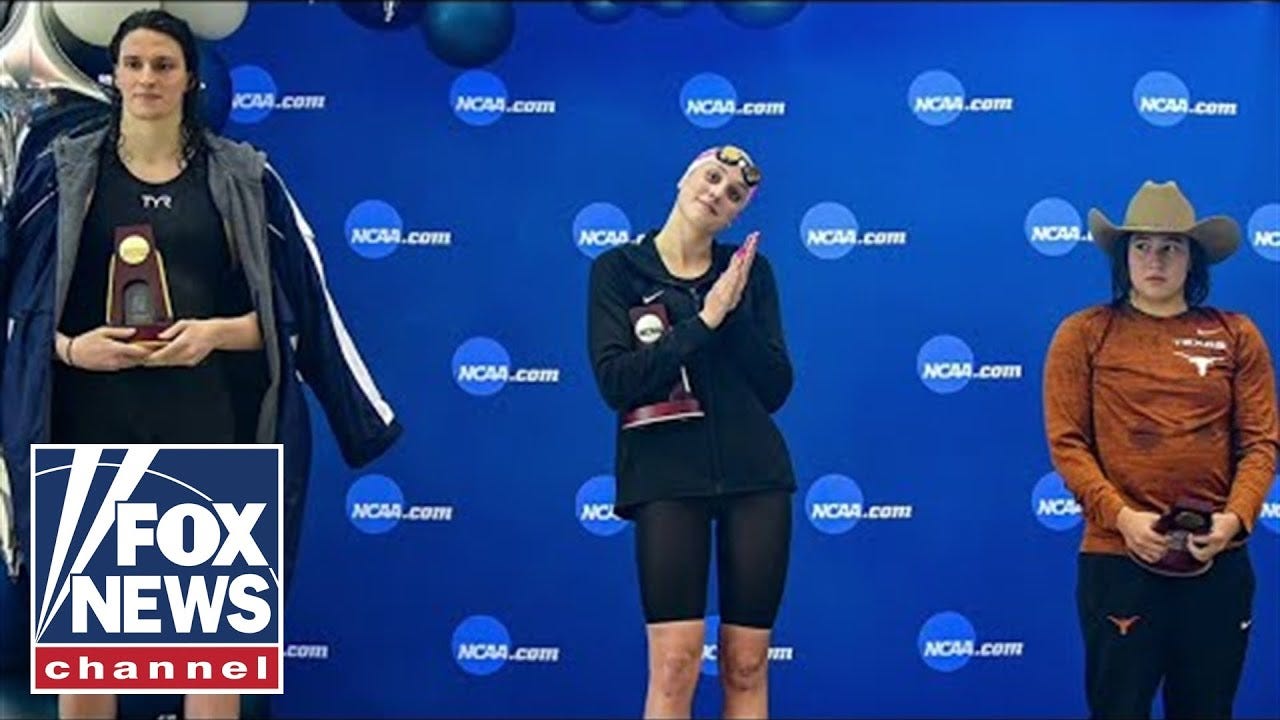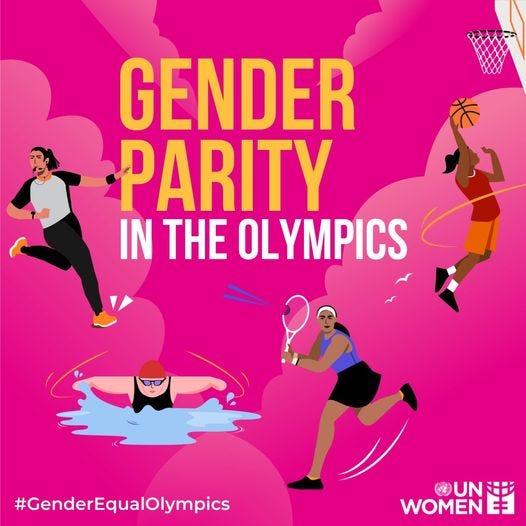Feminist gender theory is all in good fun until a woman gets punched in the nose
Feminist gender theory is all in good fun until a woman gets punched in the nose
If the boxing match between Angela Carini and Imane Khelif tells us one thing, it’s that feminists are still allergic to accountability
“Realistically, we know that a well-trained woman, a tall and muscular woman, a woman who has learned the arts of self-defense, a woman soldier, or a woman astronaut is a match for most men. If women and men of the same size and training are matched, men may not necessarily be physically superior because women have greater endurance, balance, and flexibility” (Judith Lorber and Patricia Yancey Martin, “The Socially Constructed Body: Insights from Feminist Theory,” p. 242).
**
A few years ago, if one had said there were vast strength differences between men and women that mattered in competitive sports and elsewhere, that was a misogynistic remark. Feminist wisdom told us that sex differences in physical ability were predominantly caused by society, which convinced women they were less capable. Feminism promised that when female and male athletes were at last considered equal, women’s real strength could emerge.
The transgender phenomenon has put such thinking to the test, and although defenders of transgender competition still exist, incidents such as the Olympic match between Italian boxer Angela Carini and previously disqualified Algerian Imane Khelif have made the pro-trans position somewhat more tenuous. Carini had to stop 46 seconds into the match after two powerful punches prevented her from continuing. Women’s rights defenders like J.K. Rowling are in full-throated protest.
On the essential issue, I’m on Rowling’s side. As I’ve written on many earlier occasions (especially here), male-female sex differences (not only and perhaps not even most importantly in physical strength) should not be ignored, especially when they put individuals in physical danger or weaken key institutions such as the military or firefighting. While I have no wish to demonize those with body dysmorphia, I do not believe it is possible to change one’s sex, and men should not compete in contact sports with women.
What I find most interesting, however, is the degree to which Rowling and her ilk—and her many male defenders—do not admit that the ideology of women’s rights paved the way for the current situation. It did so in its stress on gender as a process whereby “members of a society construct their bodies in ways that comply with accepted views of masculinity and femininity” (Judith Lorber and Patricia Yancey, “The Socially Constructed Body”).
Feminism celebrated transgenderism as part of gender liberation. In Sexual Politics (1969), considered the bible of the women’s movement, radical feminist Kate Millett claimed, referencing sexologist John Money, that “the best medical research points to the conclusion that sexual stereotypes have no bases in biology” (p. 27). In Woman Hating (1974), radical feminist Andrea Dworkin called for the rejection of “premises about men and women” in order for “transsexuals [to be] integrated into community, no longer persecuted and despised.” The denial of biologically-based sexual differences has long been a bedrock of feminism.
Now that such denial is having its unsurprising consequences, some feminists are rediscovering the facts of biology. But they continue to insist that the inclusion of trans women in sport—like everything to which they object—has nothing to do with popular feminist stances on equality but instead is a plot by men to hurt women. It didn’t take long for the ever-predictable Rowling to pivot to this latter point, tweeting with a picture of the two boxers in the ring, “Could any picture sum up our new men’s rights movement better? The smirk of a male who knows he’s protected by a misogynist sporting establishment enjoying the distress of a woman he’s just punched in the head, and whose life’s ambition he’s just shattered.”
Having spent many hours watching majority-female commentators celebrate female Olympians, I find it bizarre to see Rowling dubbing the Olympic establishment misogynist. Like every other domain in western societies (even the formerly macho NFL and NHL), the Olympics is overtly and excessively feminist, its web pages full of assertions about the profound importance of gender equity in sport and its never-ceasing mission to promote female athletes. One can only imagine the full-scale gerrymandering that was necessary to make 2024 the first Olympics with 50/50 participation of men and women. Equality over excellence, after all, is feminism in its purest form.
The Olympics coverage I’ve seen has been stridently feminist and alert to the tiniest vestige of so-called sexism. Just a few days ago, Eurosport commentator Bob Bollard found himself bounced from the coverage roster after joking that the Australian women’s 4 X 100 meter freestyle team were delayed exiting the Aquatic Centre because they were doing what women tend to do, “hanging around, doing their makeup.” Despite apologizing for the (surely true) remark and declaring himself a “massive advocate of women’s sport,” the veteran commentator was unceremoniously removed from his post. Neither his remark nor his quick ousting suggest a misogynistic organization.
Rowling’s baseless slam against “men’s rights” is particularly galling. I challenge Rowling or any other women’s advocate to bring forward a single recognized spokesperson in the men’s rights movement who advocates seriously (not satirically) for the inclusion of men in women’s sports or vice versa. I have spent more than ten years reading men’s issues literature and have never found anyone who denied biological sex differences—quite the contrary. Unlike Rowling, however, men’s advocates are interested in the truth about sex differences; we don’t cherry pick incidents that support a favored ideology.
Rowling’s typically petulant statement illustrates the accountability gap that is so frustrating for critics of feminism. Whenever a feminist tenet reaches its logical outcome—whether #MeToo in the workplace, female work-life balance, or men’s withdrawal from the marriage market—feminists will deny it has anything to do with feminism: misogyny is always the culprit.
In case I might seem to exaggerate or to take feminist statements out of context, I invite all interested parties to read a standard essay on the subject of constructed sex differences, “The Socially Constructed Body,” by two feminist professors of sociology at American universities. The essay was included in a college textbook, Illuminating Social Life, published in 2011.
In a feast of circular reasoning and paranoid conspiracy-mongering, Judith Lorber and Patricia Yancey Martin argue that evident differences between male and female athletes, rather than being biological, are actually the result of “markedly different treatment and expectations of boys and girls” (p. 233). From a young age, they claim a la Simone de Beauvoir, a girl is taught “to restrict her movements, to protect her body, and to use her body in ways that are approved of as feminine” (p. 234). The teaching has a nefarious motive: women are made inferior in strength so that they can be dominated by men, and the separation of men’s and women’s sports at elite levels is a ploy to maintain that domination.
Ultimately, according to Lorber and Martin, keeping male and female athletes separate is part of a conspiracy to deny women’s strength and by denying it to perpetuate inequality. As evidence for this counter-intuitive claim, they explain that the number of sets in women’s tennis matches was reduced years earlier to create the illusion that male tennis players are stronger and have greater endurance than women (p. 235). Moreover, male athletes are artificially celebrated over female ones, with the result that “men’s sports have higher prestige, more extensive media coverage, and greater economic rewards” (p. 233). Ultimately, women are made inferior, the authors insist, because of a mass brainwashing project:
“If members of society are told repeatedly that women’s bodily limitations prevent them from doing sports as well as men, they come to believe it, and the belief is reinforced by the media. The result is that even championship teams falter and fail” (p. 237).
Lorber and Martin end their chapter with a rousing call for gender subversion: the refusal on the part of men and women to conform to the standard expectations for their sex—including, one presumes, the expectation that a female-identifying person with XY chromosomes should not compete against a female boxer. Subverting social rules and conventions, they declare without qualification, is an act of liberation on the path to a gender-equal future (p. 243).
The clarity and representativeness of Lorber and Martin’s position deserves emphasis. As recently as 13 years ago, the doctrinaire feminist stance was that there was no knowable or unalterable strength difference between men and women; and keeping male and female athletes separate was a misogynistic measure to enforce male supremacy. The Olympic establishment, far from enjoying a woman’s distress, as Rowling ridiculously charged, has merely been trying, stupidly, to show itself sufficiently pro-feminist in its policies.
Arguments against the significance of sex differences have been used by women’s advocates for the past four decades to force the admission of women into frontline positions in soldiering, policing, and firefighting, with indifference to the consequences in lowered capacity and lives endangered. It was always a terrible feminist idea. It remains a terrible feminist idea. It would be helpful if the self-elected defenders of women could acknowledge that simple truth.
Source: The Fiamengo Files




Comments
Post a Comment